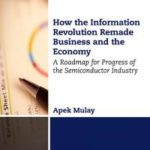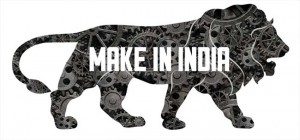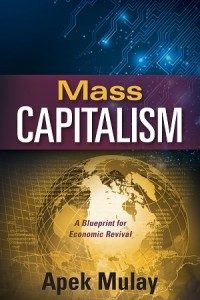This has originally been published on EBN
Ten months ago, Indian Prime Minister Narendra Modi launched his signature Make In India initiative to transform India into a global manufacturing hub. Less than a month later, I released the first book in United States to explore the macroeconomics of global semiconductor business (titled Mass Capitalism: A Blueprint for Economic Revival).
With a patriotic fervor and wanting to help the new government of India in its ambitious initiative, I arrived to my home country India and presented my ideas, in the form of a paper titled Global Economic Crisis and Mass Capitalism as Blueprint for Economic Revival, to the Indian government’s think tank in Mumbai in December 2014. I explained why the US economy is headed for an economic collapse akin to 2008 due to crony capitalism resulting from a growing gap between wages and productivity in U.S. economy. I also stressed that for Make in India to become successful and to create a sustainable economy in India, the wages of the Indian workforce must catch up with worker productivity.
As I put forth in my book, I believe that globalization policies have resulted into a loss of dominance of the U.S. semiconductor industry due to the free trade policies followed by U.S.-based multi-national corporations post world war II. These deceptive trade policies have also resulted into a huge unemployment in United States.
Even a country like China, which has received huge amount of foreign investments from the United States, has experienced a spectacular economic boom. However, the absence of true free markets, a result of the state capitalism in China, has resulted into a gap between wages and productivity. China has cleverly controlled its exchange rates and avoided depreciation of U.S. dollar (USD) by creating artificial demand for Chinese Yuan, in spite of huge trade deficits of United States with China. In this way, China has not only accumulated trillions of USD in its FOReign EXchange (FOREX) reserves but has also outsourced huge unemployment to the United States.
At the same time, since the wages of Chinese work force have failed to keep up with worker productivity, China’s stock markets started crashing earlier this summer. The trajectory is very similar to the economic crash that the United States experienced in 2008. The Chinese government has tried intervening into its economy but it does not seem to have helped China and the crash of Chinese stock markets continues.
When it comes to the Make in India initiative, not only has the government of India not endorsed any free market policies, its economic policy makers have also not learnt any lessons from the events happening across the world. Recently, there has been an attempt by the Finance Ministry to jeopardize the autonomy of Reserve Bank of India (RBI). The Financial Sector Legislative Reforms Commission (FSLRC) published a first draft of recommendations, which gives the center the right to appoint four out of seven monetary policy committee members, and takes away the veto power of RBI governor. I believe that this move has come into effect after reluctance on part of the RBI’s competent governor, Raghuram Rajan, to reduce RBI’s repo-rates significantly, in spite of push by the finance minister of India, Arun Jaitley. Rajan is much more worried about impact of a hike in U.S. bench mark interest rates on the Indian economy and hence does not want to lower repo-rates significantly.
In order to create a free market economy, the central bank of any country should have two key characteristics:
- Being under the control of a democratically elected government and
- Following a monetary policy so that wages should keep track with employee productivity.
Both of these have to be satisfied to establish a true free market economy in India. As Indian government does seem to be working towards establishing a true free market economy, where wages catch up with productivity, the only option for the government to show an economic growth (by means of growth of Indian stock markets) is to create a debt-based Indian economy similar to how U.S. ex-chairman of the Federal Reserve Alan Greenspan created a debt-based U.S. economy after 2001 by lowering of the Federal Reserve’s bench mark interest rates significantly, in order to lure more Americans into increased borrowing and created a bubble economy. This resulted in a financial meltdown of American economy in 2008 through the bursting of the unsustainable debt bubble.
Make in India should learn lessons of common sense macroeconomics from the unpleasant experiences of the Make in Ireland and Make in China initiatives. Both Ireland and China experienced a short-term economic boom followed by a crash of their respective stock markets (due to the bursting of the debt bubble) in the absence of free markets because of the growing gap between wages and productivity. Given a proven evidence of failure of Make in Ireland and Make in China to create a long term stability and prosperity in either Ireland or China, a similar failure to create a free market economy in India would result in the same results. This would worsen the problem of poverty and unemployment in India and prime minister Narendra Modi’s approach to bring good days for India would, in fact, collapse the Indian economy and create worst days for Indian economy in the near future.
The Make in India team can still create a robust economy for India by creating manufacturing jobs in the country by learning from mistakes made by other countries. India can also transition to a developed economy by bringing out a sustainable economy when it implements Digital India Revolution.
My two books below would help the Indian economy and its Make in India initiative.





Recent Comments